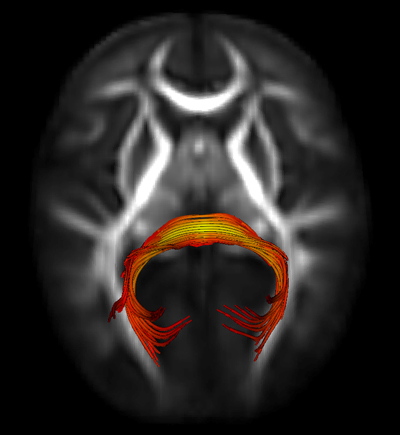
When they were infants, children who were later diagnosed with autism took longer to shift their gaze during a measure of eye movements than did infants who were not diagnosed with autism. The researchers believe that brain circuits involved with a brain structure known as the splenium of the corpus callosum (shown in this scan) may account for the differences in gaze shifting between the two groups.
Image courtesy of Jason Wolff, Ph.D., University of North Carolina at Chapel Hill.
Image courtesy of Jason Wolff, Ph.D., University of North Carolina at Chapel Hill.
 BACK TO TOP
BACK TO TOP